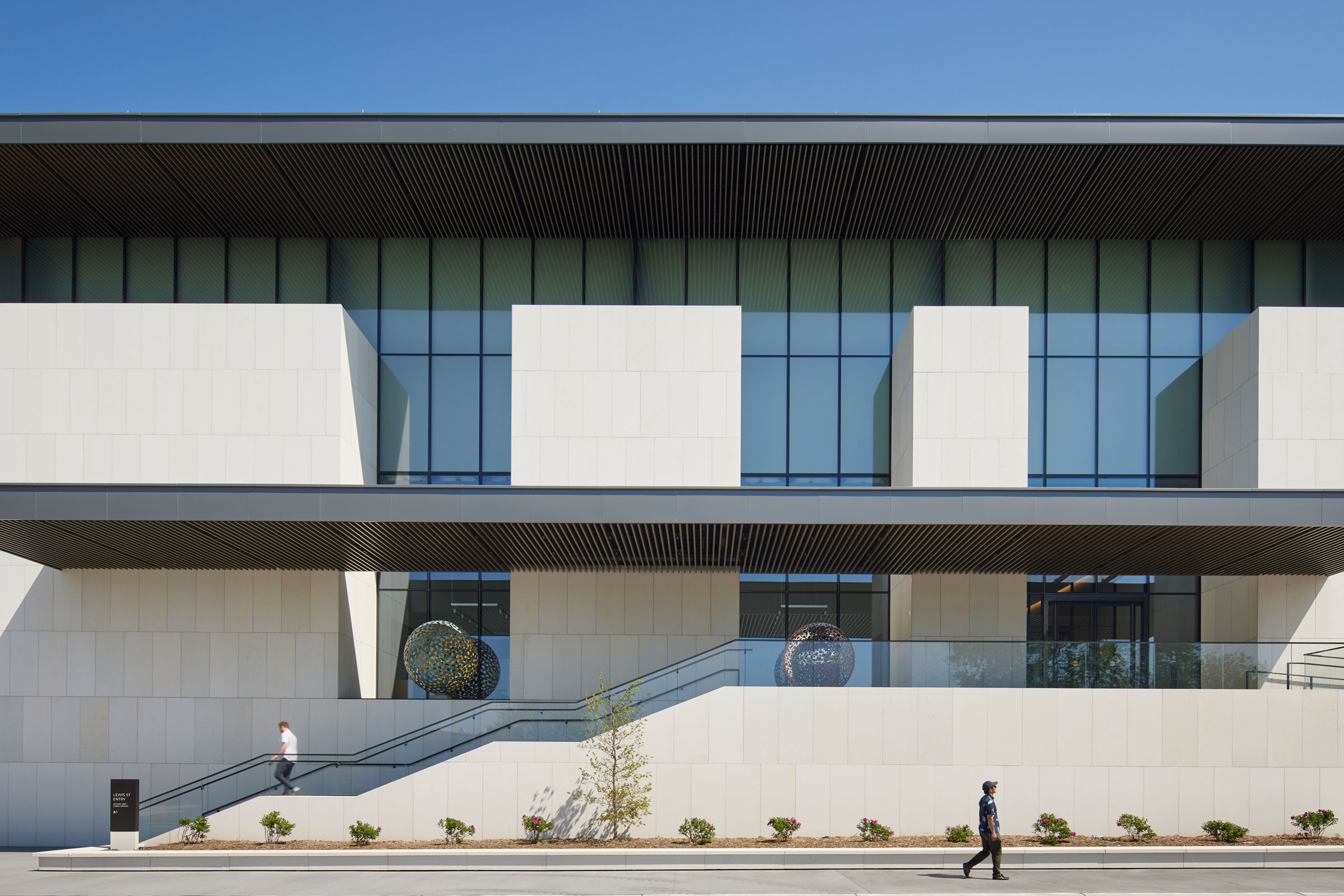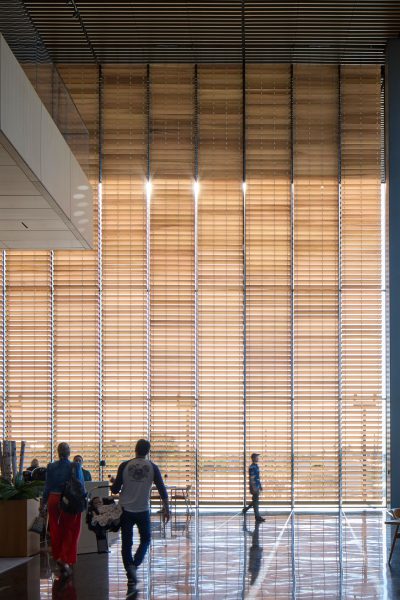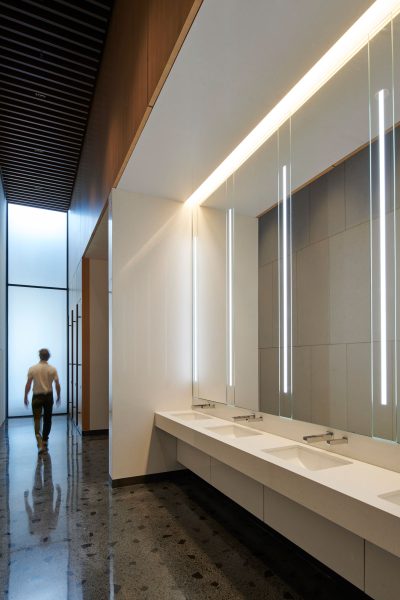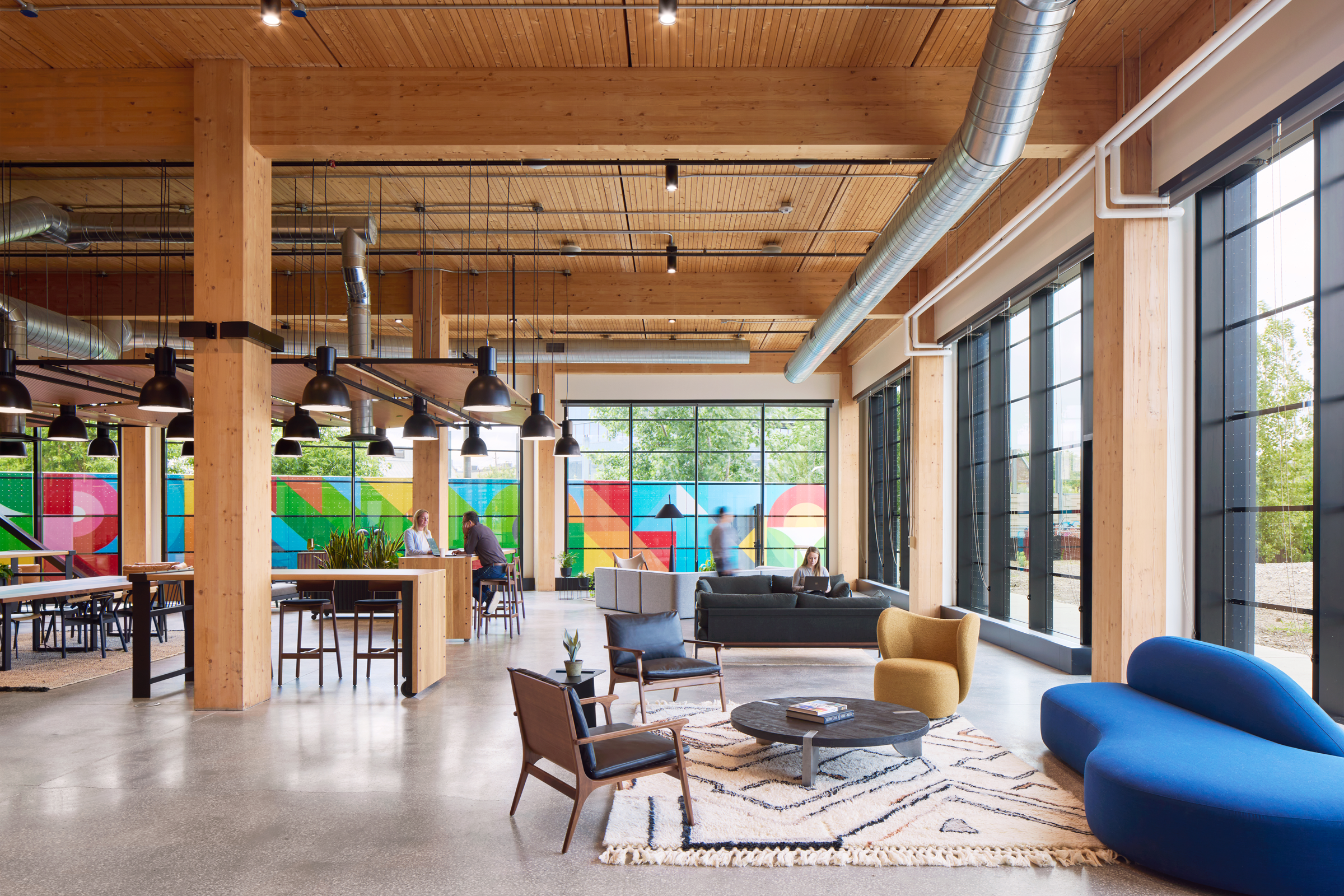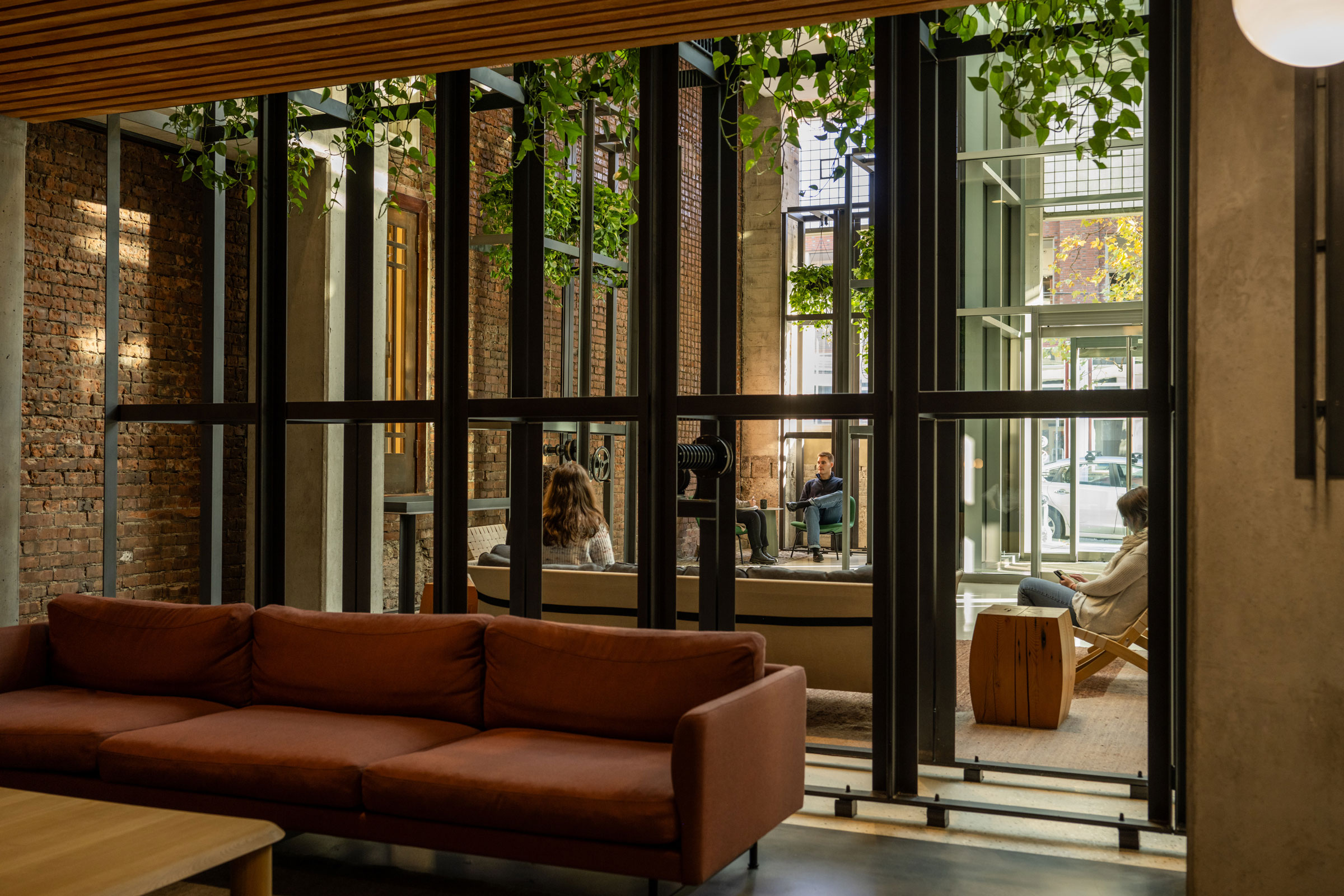Story at a glance:
- The Mulva Cultural Center in De Pere, Wisconsin, was developed by James J. Mulva to give back to his hometown.
- A 200-person auditorium, exhibition space, educational classrooms, and more welcome the community for creative and cultural programming.
- Triple insulated glass, a custom shading system, and geothermal heating and cooling are among some of the Mulva Cultural Center’s green building initiatives.
For years if you had asked any Green Bay resident about the architectural prize of the area, they’d likely say Lambeau Field. But now the Mulva Cultural Center—a new Midwest mecca of creative arts and culture—in nearby De Pere, Wisconsin takes the title.
Completed in 2024, the 75,000-square-foot project brought to life James J. Mulva’s dream of creating a space of community, culture, and learning for his hometown. When Mulva initially brought the idea to Skidmore, Owings & Merrill (SOM), he thought it was too small-scale for an international firm like SOM, says Scott Duncan, partner. “But it’s big in its mission and vision, and that’s what appealed to us about working with Jim and his wife, Miriam,” Duncan says. And so they got to work.
Situated at a bend in the Fox River, the Mulva Cultural Center is elevated on a limestone plinth reminiscent of an ancient Greek temple. The elevation was intentional; at about a floor above the surrounding urban context, anyone who steps inside the cultural center or lingers on the terrace can see the whole of De Pere unfolding below.
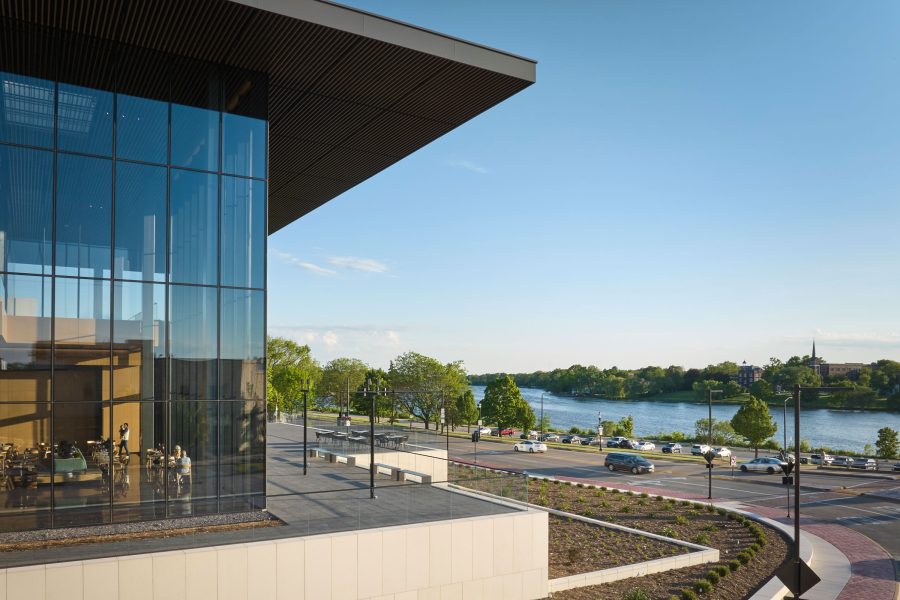
Doors throughout the ground floor of the Mulva Cultural Center in Wisconsin provide access to large outdoor terraces that overlook the Fox River and surrounding landscape. Photo by Dave Burk
“The cultural center is a statement of giving back to De Pere, and so what the building looked like and how it engaged with the public realm around it was important,” Duncan says. “The elevation creates an outstanding vantage point for people inside to look out at the river and adds to the sense of civicness of the building as well.”
While the building displays De Pere below, the glazed facade provides a window to goings-on of the cultural center within. And with a 200-seat auditorium, grand hall for traveling exhibits, educational classrooms, upscale dining areas, gift shop, and more, there is plenty going on. “From the river you can see the activity inside. The function of the center is revealed to anyone,” Duncan says.

Designed by SOM, the Mulva Cultural Center integrates highly sophisticated structural and mechanical systems to minimize operational energy consumption and enhance visitor comfort. Photo by Dave Burk
But the building’s see-through exterior did not come without its challenges. “The biggest challenge in the design had to do with this desire to keep a transparent and visually porous frontage facing the west,” Duncan says. During the day, when the sun is higher in the sky, the cantilevered steel canopy provides passive shading and integrates skylights to filter daylight inside. But because the sun sets in the west, from 2pm to sundown the west side of the building would be awash in unfiltered sunlight. “We recognized that sun shading would be needed and asked ourselves, ‘Why don’t we make that a real feature of the design? Make it something beautiful?’”
- A custom, motorized Venetian blind system was crafted from natural timber for the SOM-designed Mulva Cultural Center. Triple insulated glass helps significantly reduce operational energy consumption, and bird-safe glass prevents window strikes. Photo by Dave Burk, courtesy of SOM
- SOM designed the Mulva Cultural Center, completed in 2024, in De Pere, Wisconsin. Photo by Dave Burk, courtesy of SOM
The result was a custom, motorized Venetian blind system crafted from natural timber and hidden within the ceiling. As the sun begins its descent, the blinds drape down the 50-foot-tall glass wall, minimizing heat gain and shading those within. Triple insulated glass also helps significantly reduce operational energy consumption, and bird-safe glass keeps local and migrating feathered friends safe from window strikes.
“The ecosystem and environmental performance were big considerations throughout,” Duncan says. “We used a layered approach to sustainability that went from material choices to overall building systems.” That includes systems like the cultural center’s geothermal heat recovery heat pump system, which delivers heating and cooling through radiant floors and air handling units.
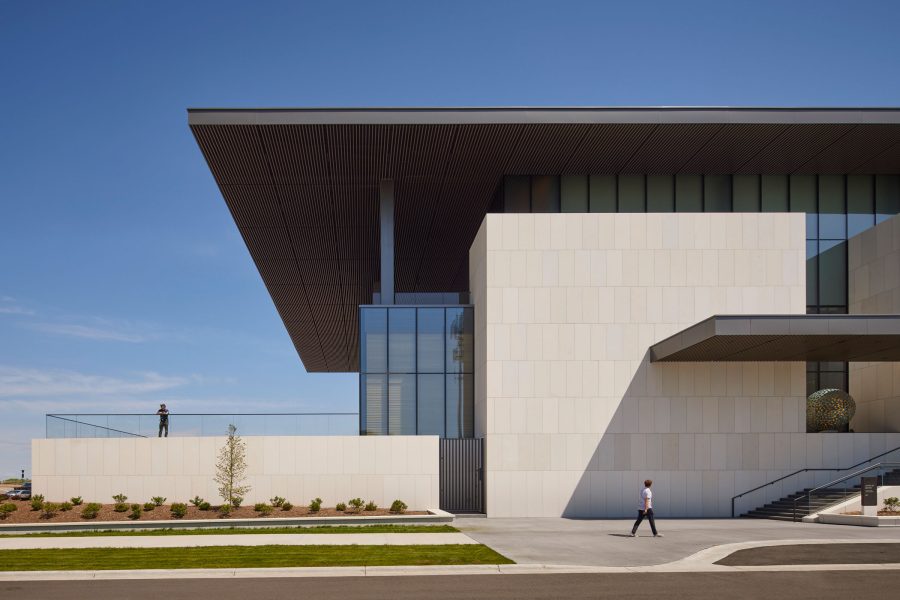
SOM designed the 73,800-square-foot Mulva Cultural Center to be a sustainable community hub creativity for De Pere, Wisconsin. Photo by Dave Burk
“Elsewhere we used very high-performance insulated elements, such as limestone walls, which are fantastic insulators and also low-carbon. Stone is among the lowest carbon materials you can use, and so we saw a lot of benefit in reducing the overall carbon footprint of the building by utilizing the limestone,” Duncan says.
Together all of these elements combine to create a gathering space that celebrates the deep roots of De Pere, with creative and cultural programming that enlightens and extends beyond it.
“There was an idea Jim was talking about from the beginning, which was that he wanted this to feel like De Pere’s living room—a place where people would come and hang out,” Duncan says. “But it also has this timelessness, the reservedness of an institution, and the humility of the people in the Midwest. It’s a building that you want to visit; it’s very welcoming.” And that’s exactly the point.

